Pruning apple trees is usually best accomplished during late fall or early winter as the tree goes into dormancy.
This will let you see better what you are cutting and how each branch you remove affects the look of the tree.
Pruning apple trees to keep them healthy and to help make lots of fruit is one approach.
Apple trees produce fruit on branches that are older than one year from fruiting spurs. The new growth this year does not produce any fruit.
Also apple trees need lots of sun to produce fruit.
Things you will need:
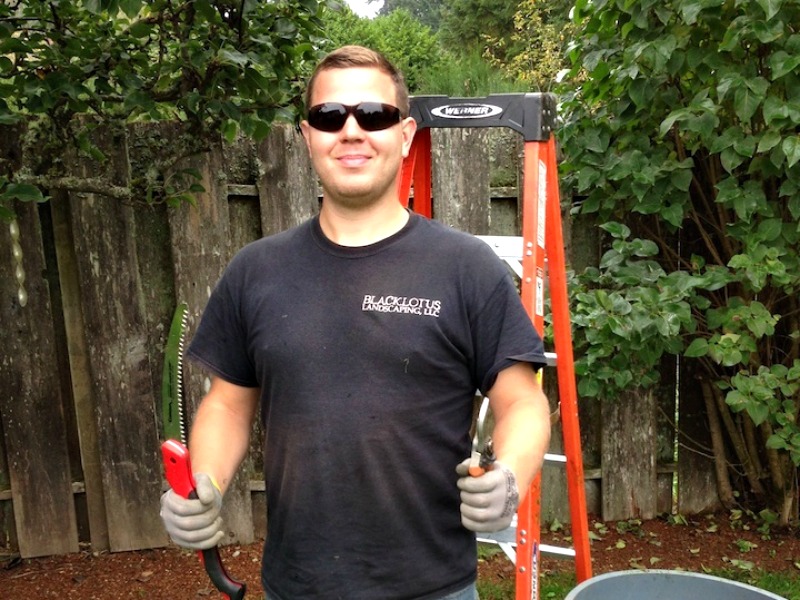 Pair of pruning loppers for branches 1-2” or small folding saw for this and cuts thicker than 2”, pair of hand clippers for ½ cuts, small step ladder
Pair of pruning loppers for branches 1-2” or small folding saw for this and cuts thicker than 2”, pair of hand clippers for ½ cuts, small step ladder
Step 1: Cut out any Dead, Dying, or Diseased branches
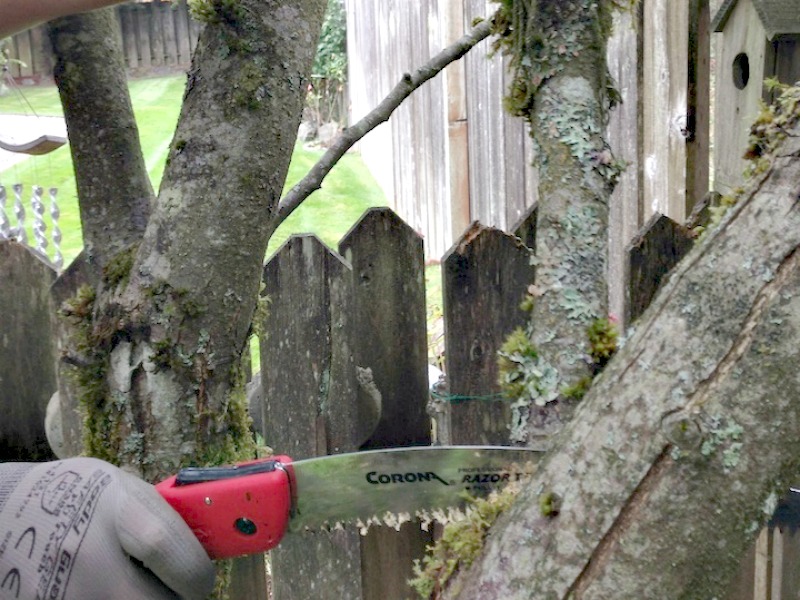 This stage of pruning can occur any time during the year. Dead or sickly looking branches or stems can be traced back to either the main trunk or the next major branch and cut off. Be careful to not cut into the branch collar. This is the slightly thick portion of the branch as you near the trunk. Try to leave the collar alone and cut the branch right outside this area.
This stage of pruning can occur any time during the year. Dead or sickly looking branches or stems can be traced back to either the main trunk or the next major branch and cut off. Be careful to not cut into the branch collar. This is the slightly thick portion of the branch as you near the trunk. Try to leave the collar alone and cut the branch right outside this area.
Work your way around the tree in a circle until you have all this type of cut made.
Step 2: Thinning
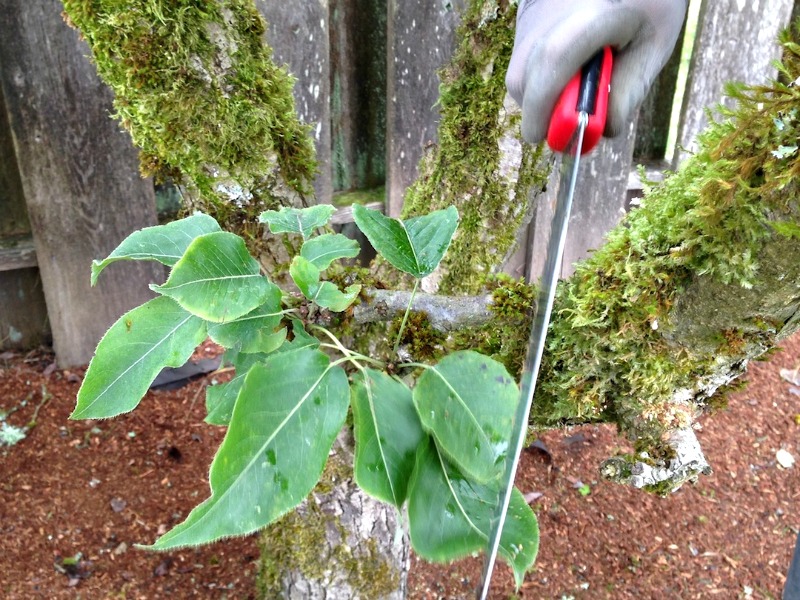 You want to create some space for air and light in between the major branches that form from the trunk. Try to limit your total cutting over all to no more that 30% of the total leaves that will form next year.
You want to create some space for air and light in between the major branches that form from the trunk. Try to limit your total cutting over all to no more that 30% of the total leaves that will form next year.
Look for crowded areas and start thinning out some more until you have some evenly spaced main branches that are not too crammed.
The more light we can get into the tree the more fruit it will produce.
Step 3: What to do with the Rest
Prune out branches that are hanging low or in the way of mowing, etc. Branches that hang lower than an imaginary line parallel to the ground usually don’t produce much fruit and get in your way. Prune out suckers that may grow from the base of the tree or from the root system.
Step 4: Pruning back the Ends of the Branches
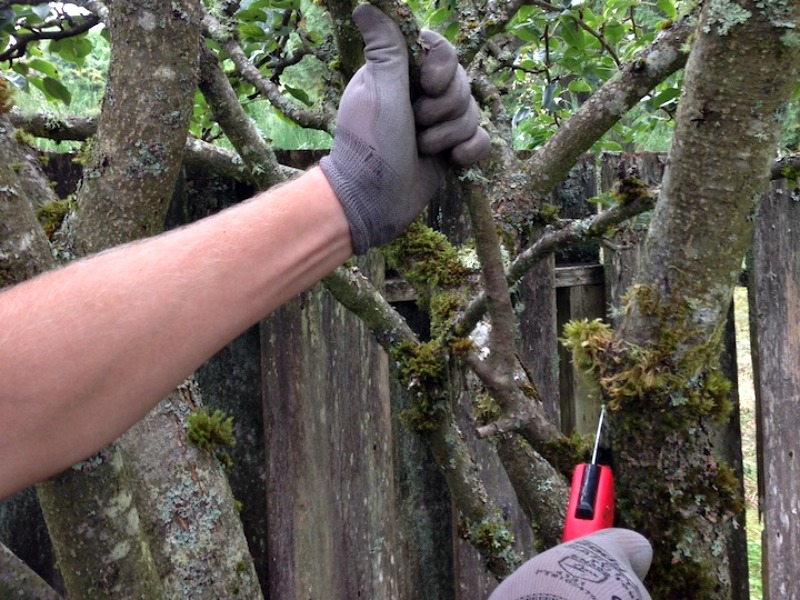 If the tree has become taller or wider than you would like for fruit picking you can consider pruning back the ends of the branches either to another side branch or leave a stub. Each stub you leave will produce lots of new growth from the end whereas cutting back to a side branch will make less work for you next year.
If the tree has become taller or wider than you would like for fruit picking you can consider pruning back the ends of the branches either to another side branch or leave a stub. Each stub you leave will produce lots of new growth from the end whereas cutting back to a side branch will make less work for you next year.
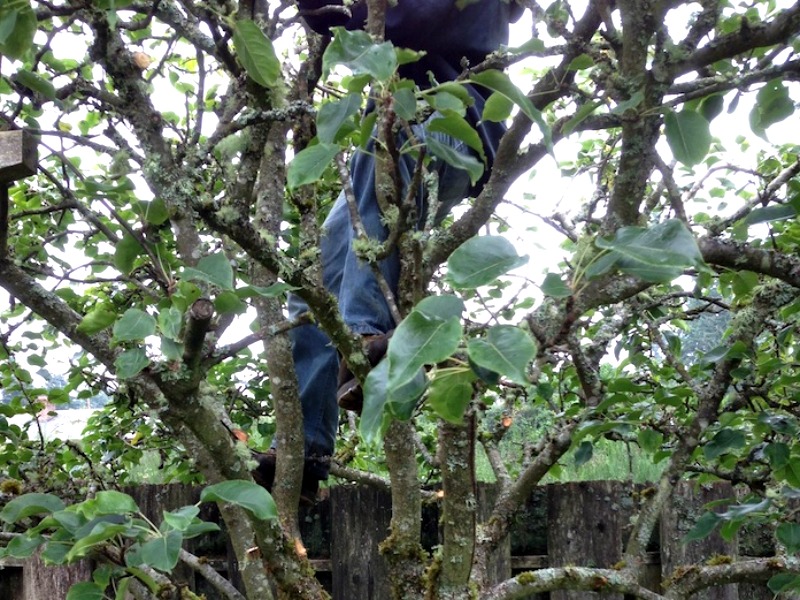
Step 5: Fruiting Spurs
Thin, knobby fruiting spurs develop over time on wood older than one year. You want to keep these as this is where the fruit develops. Avoid damaging these as much as possible as you prune. Keep in mind that as you work, work in a circle slowly working you way around the tree and tossing branches out of your way. In this manner you wont cut too much from one area.
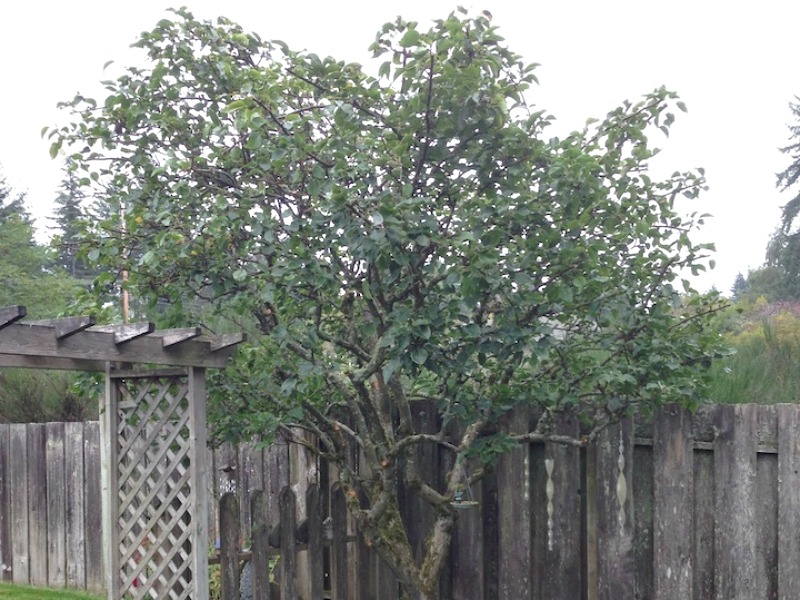 From time to time stand back and look at the tree and you’ll get a better sense of should this branch stay or go.
From time to time stand back and look at the tree and you’ll get a better sense of should this branch stay or go.
About the Author:
Jonathan Aflatooni is exceptionally passionate about plants and landscaping. Since a young age his Mom gave him the gift of working with plants and landscapes and it grew on him ever since. Along with his brothers they own and operate a landscape maintenance and installation company called Blacklotus Landscaping LLC and have been in business for over 5 years now. Jonathan hopes to share some more practical advice and insights with everyone in the near future.
I bought my house a couple years back and acquired a large mature Granny Smith apple tree. It needs to be pruned badly, but the last 2 seasons, the apples appear to be infested with some sort of small beatle. There’s always a small hole and when the apples are picked, the Beatles will usually begin to crawl out. I’m not sure if there’s a connection, but there are also symmetrical rings of holes bored into the main trunks of this tree.
If you have any idea what this could be and how to treat it, I’d appreciate your help.
Scott,
I’d say the holes in the base of the tree are some kind of borer but probably unrelated to the issue with the apples. I’d prune the tree as needed, let lots of sunlight in and on the apples. Don’t be bashful about pruning the tree, the few branches the tree has, the less fruit it will produce and that’s a good thing. Too much fruit results in all poor quality fruit. Apple growers actually take measures to remove at least 10% of the apples from their trees to give that energy to the remaining apples.
A healthy tree should produce better fruit. Of course you can spray for the bugs, but if using organic standards you shouldn’t need to.
I am interesting in knowing how to have better cross
pollination in our Orchard. I have been told that all I
need is one crab apple tree and then it would not be
necessary for us to have two of each type of fruit
tree for cross pollination. Is this true? if so, where
can we order a crab apple tree ?? thanks !!
Jan,
Crab apple trees should be easy enough to find, and I don’t know for sure, but I’m thinking you need another true apple tree to pollinate an apple tree. But I am going to direct you to stark bros, they have a lot of good info about pollination on their website. http://www.starkbros.com/growing-guide/article/the-importance-of-fruit-tree-pollination